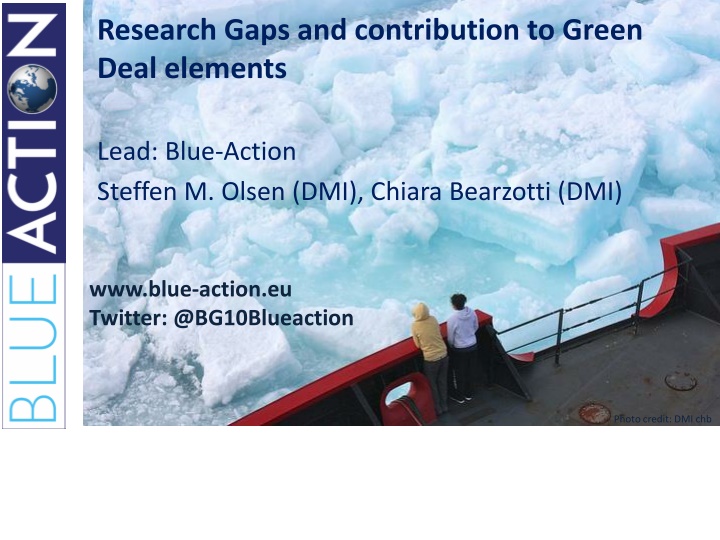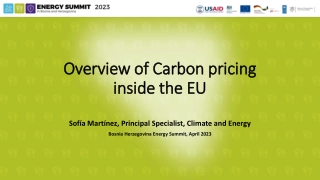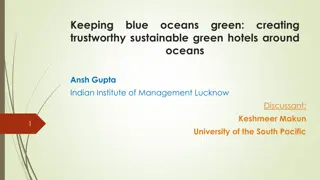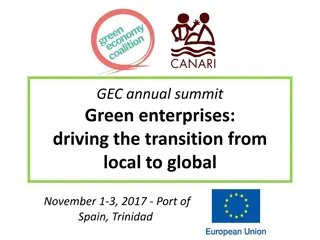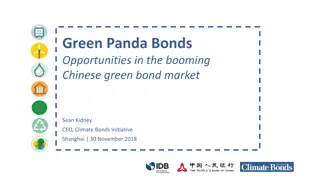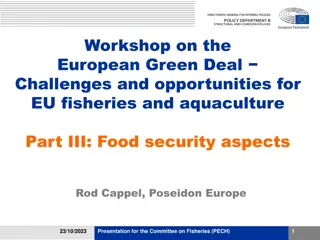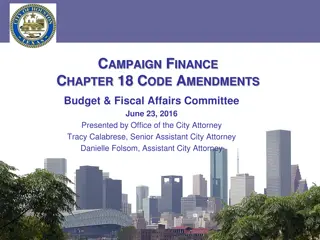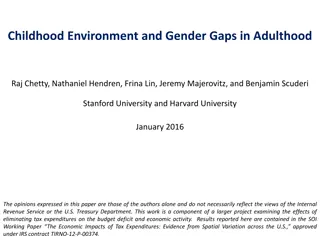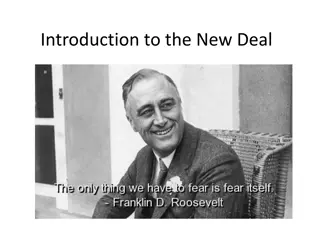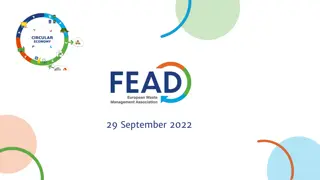Research Gaps and Contribution to Green Deal Elements
The European Green Deal responds to climate challenges with proposed research priorities by Blue-Action. Identifying gaps in topics like AMOC, climate services scalability, Arctic weather, and human health can contribute to mobilizing research and fostering innovation for large-scale changes.
Uploaded on Mar 12, 2025 | 0 Views
Download Presentation

Please find below an Image/Link to download the presentation.
The content on the website is provided AS IS for your information and personal use only. It may not be sold, licensed, or shared on other websites without obtaining consent from the author.If you encounter any issues during the download, it is possible that the publisher has removed the file from their server.
You are allowed to download the files provided on this website for personal or commercial use, subject to the condition that they are used lawfully. All files are the property of their respective owners.
The content on the website is provided AS IS for your information and personal use only. It may not be sold, licensed, or shared on other websites without obtaining consent from the author.
E N D
Presentation Transcript
Research Gaps and contribution to Green Deal elements Lead: Blue-Action Steffen M. Olsen (DMI), Chiara Bearzotti (DMI) www.blue-action.eu Twitter: @BG10Blueaction Photo credit: DMI chb
European Green Deal: response to the challenge The atmosphere is warming and the climate is changing with each passing year. One million of the eight million species on the planet are at risk of being lost. Forests and oceans are being polluted and destroyed
Topics proposed by Blue-Action as research priorities can provide contribution to the several elements of Green Deal listed below. We have highlighted HOW and WHERE to in blue in the following slides
Blue-Action identified research gaps AMOC and Ocean Observations Scalability of Climate Services AMOC fingerprints Observing the AMOC Beyond the AMOC Scalability of fish forecasts Human Health Arctic Weather and Climate Human health and adaptation Research & indigenous communities Arctic weather systems and their extremes Arctic (Polar) warming Predictability and Model Uncertainty Safe Operations in the Arctic
AMOC and Ocean Observations Scalability of Climate Services Arctic Weather and Climate Human health and adaptation
Green Deal Elements Topics proposed by Blue-Action as research priorities can provide contribution to Mobilising research and fostering innovation We have highlighted HOW and WHERE to in blue in the following slides
Mobilise research & foster innovation Horizon Europe four Green Deal Missions deliver large-scale changes (areas: adaptation to climate change, oceans, cities and soil) bring together a wide range of stakeholders (incl. citizens and regions) Focus on new technologies, sustainable solutions and disruptive innovation Large-scale deployment and demonstration of new technologies across sectors and across the single market Building new innovative value chains
EU Research & Innovation Agenda New approaches: Experimentation Working across sectors and disciplines (systemic approach) Involvement of local communities in working towards a more sustainable future, in initiatives that seek to combine societal pull and technology push
Accessible and interoperable data are at the heart of data-driven innovation Data + infrastructure (supercomputers, cloud, ultrafast networks) + artificial intelligence solutions = facilitate evidence-based decisions and expand the capacity to understand and tackle environmental challenges Unlock benefits of digital transformation to support the ecological transition
Earth System Model: predict and manage environmental disasters An immediate priority will be to boost the EU s ability to predict and manage environmental disasters To do this, the Commission will bring together European scientific and industrial excellence to develop a very high precision digital model of the Earth .
Topics proposed by Blue-Action as research priorities can provide contribution to the areas circled in red We have highlighted HOW and WHERE to in blue in the following slides
Decarbonisation of the energy system Clean energy transition and combination of smart infrastructure and smart integration 1. Phasing out coal 2. Decarbonising gas 3. Focus on Renewables: increasing offshore wind production, smart integration of renewables, energy efficiency and other sustainable solutions across sectors
New EU strategy on adaptation to climate change Climate change will continue to create significant tress in Europe in spite of the mitigation efforts. Focus on: Strengthening the efforts on climate-proofing, resilience building, prevention and preparedness Influencing public and private investments, including nature-based solutions data access for developing instruments to integrate climate change in risk management practices
Climate neutral and circular economy Job-intensive economic activities: to be expanded Energy-intensive sector: to be decarbonised and modernised Ressource-intensive sector: sustainable product policy, re-use or recycle plastic Integrated single marked for by-products and secondary raw materials Digital technologies are key: AI, 5G, cloud and edge computing, IoT, devices for monitoring air and water pollution Climate and ressource frontrunners for first commercial breakthrough technologies by 2030 Strategic value chains are essential (battery value chain)
Accelerating the shift to sustainable and smart mobility Transport accounts for 25% of GHG emissions in Europe. For climate neutrality, 90% reduction in emissions needed by 2050 Freight operations: Shift to rail and inland waterway, and short-sea shipping, multimodal transport Urban areas: Smart traffic management, automated and connected multimodal mobility Transport should become less polluting
From Farm to Fork A fair, healthy and environmental friendly food system European food must remain safe, nutritious and of high quality. It must be produced with minimum impact on nature Farmers and fishermen are key to managing the transition Develop innovative farming and fishing techniques that protect harvest from pests and diseases Strengthen efforts to tackle climate change, protect the environment and preserve biodiversity Achieve circular economy (food processing and retail sectors) Stimulate sustainable food consumption
Preserving and restoring ecosystems and biodiversity/1 Drivers of biodiversity loss: use of land/sea, exploitation of natural resources, climate change Biodiversity strategy 2020 Farm to Fork strategy 2020 Common Fisheries Policy: reduce the adverse impacts that fishing can have on ecosystems, especially in sensitive areas Support to more connected and well-managed marine protected areas
Preserving and restoring ecosystems and biodiversity /2 Inputs to blue economy are central in: Alleviating the demand on EU land resources Tackling climate change Improving the use of aquatic and marine resources and by promoting the production and use of new sources of protein that can relieve pressure on agricultural land
Preserving and restoring ecosystems and biodiversity /3 Oceans role in mitigating and adapting to climate change is increasingly recognised Lasting solutions to climate change require greater attention to nature-based solutions including healthy and resilient seas and oceans
Leave no one behind: Education and training Engage with wider community, schools, families on the changes for a transition Competence framework to develop skills and attitudes on climate change and sustainable development Re-skilling and upskilling of workforce to reap the benefits of the ecological transition (from declining sectors to growing ones) Enhance the employability in the green economy
Thank you! The Blue-Action project has received funding from the European Union s Horizon 2020 research and innovation programme under grant agreement No 727852 Twitter: @BG10Blueaction Zenodo: https://www.zenodo.org/commu nities/blue-actionh2020 www.blue-action.eu
